Enjoying the content on 3QD? Help keep us going by donating now.
Category: Recommended Reading
On The Village Voice
Ed Park at Harper’s Magazine:
 I started at the Voice while in grad school in 1994. I was new to the city, in love with it but slightly terrified. I was looking for part-time work, and a friend of a friend put me in touch with the copy chief at the paper. I passed the test, armed with Webster’s 10th and Chicago 14 and a much-thumbed xeroxed packet covering house style. I took a couple shifts a week, usually from 11 am to 7 pm, working in a sunny room on the third floor with the rest of copy and fact-checking—about a dozen people, most days.
I started at the Voice while in grad school in 1994. I was new to the city, in love with it but slightly terrified. I was looking for part-time work, and a friend of a friend put me in touch with the copy chief at the paper. I passed the test, armed with Webster’s 10th and Chicago 14 and a much-thumbed xeroxed packet covering house style. I took a couple shifts a week, usually from 11 am to 7 pm, working in a sunny room on the third floor with the rest of copy and fact-checking—about a dozen people, most days.
We stared at our ATEX monitors, which had the scrapyard aesthetic of Seventies science fiction: amber letters on scuzzy screens, chunky keyboards that crackled like small-arms fire. When a new story hit the queue, we newbies raced to give it a read. I’d swoop in if I saw, say, a piece by the art-house film reviewer J. Hoberman or the gossip columnist Michael Musto or the soi-disant “dean of American rock critics,” Robert Christgau. None of them ever phoned it in. Other names invited hesitation, and the copy chief would prod us over ATEX. Once you entered corrections and queries, you’d type your initials in the “c1” field at the top and return it to the editor, who would process the changes and send it back to the queue for a second read.
more here.
Enjoying the content on 3QD? Help keep us going by donating now.
Read Your Way Through Seoul
Han Kang at the NYT:
 Seoul is a megacity, with a population of nearly 10 million and a name pronounced like “soul.” There were times when I couldn’t stand its scale and pace of change, but I have managed to find a tranquil corner and continue to live in this city. Although modern at first glance, Seoul has a long history. People first began to gather here 6,000 years ago. Over the centuries, the city was the center of dynasties that ruled the region, and it remains the capital of South Korea.
Seoul is a megacity, with a population of nearly 10 million and a name pronounced like “soul.” There were times when I couldn’t stand its scale and pace of change, but I have managed to find a tranquil corner and continue to live in this city. Although modern at first glance, Seoul has a long history. People first began to gather here 6,000 years ago. Over the centuries, the city was the center of dynasties that ruled the region, and it remains the capital of South Korea.
In other words, the city exists under thick layers of time. News of construction projects brought to a stop after digging in the city center unearthed drainage facilities from a thousand years ago or porcelain dating back hundreds of years is a reminder of that. As I walk past the stone markers of old buildings destroyed during the Japanese occupation, from 1910 to 1945, or a brutal ideological war, from 1950 to 1953, I see the royal palaces and traditional private houses that have survived, the apartment complexes built since the 1960s that have evolved into high-rises, the commercial skyscrapers dazzling with night lights.
more here.
Enjoying the content on 3QD? Help keep us going by donating now.
Is Malcolm Gladwell Out of Ideas?
Anand Giridharadas in The New York Times:
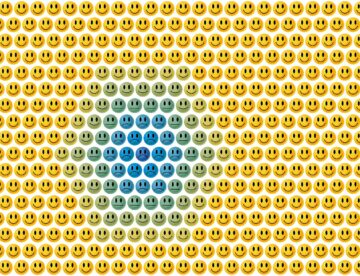 Malcolm Gladwell could have written a fresh book. Instead, he created a brand extension of his 2000 hit, “The Tipping Point.” The result, “Revenge of the Tipping Point,” is a genre bender: self-help without the practical advice, storytelling without the literariness, nonfiction without the vital truths, entertainment without the pleasure, a thriller without actual revelation and a business book without the actionable insights.
Malcolm Gladwell could have written a fresh book. Instead, he created a brand extension of his 2000 hit, “The Tipping Point.” The result, “Revenge of the Tipping Point,” is a genre bender: self-help without the practical advice, storytelling without the literariness, nonfiction without the vital truths, entertainment without the pleasure, a thriller without actual revelation and a business book without the actionable insights.
But it will be big! For Gladwell’s books belong to that special category where books are not books so much as advertisements. “Revenge of the Tipping Point” might get you to sign up for Gladwell’s MasterClass course on storytelling. It might lead you to Pushkin Industries, the podcast company he helped start. Or it could inspire a business to hire him to give the new talk his speaking agency is already marketing on “how not to miss the forest for the trees.” My criticism isn’t that Gladwell speaks to a wide audience. That is what I admire most about him. He is the literary equivalent of those politicians who get nonvoters to the polls. With legacy media eroding and book sales sluggish and disinformation spreading and truth under attack by some of our own leaders, millions of people live in idea deserts. For them, Gladwell is a farm stand.
More here.
Enjoying the content on 3QD? Help keep us going by donating now.
Scientists Say Net Zero Aviation Is Possible by 2050—If We Act Now
Ed Gent in Singularity Hub:
 Aviation has proven to be one of the most stubbornly difficult industries to decarbonize. But a new roadmap outlined by University of Cambridge researchers says the sector could reach net zero by 2050 if urgent action is taken. The biggest challenge when it comes to finding alternatives to fossil fuels in aviation is basic physics. Jet fuel is incredibly energy dense, which is crucial for a mode of transport where weight savings can dramatically impact range. While efforts are underway to build planes powered by batteries, hydrogen, or methane, none can come close to matching kerosene, pound for pound, at present. Sustainable aviation fuel is another option, but so far, its uptake has been limited, and its green credentials are debatable.
Aviation has proven to be one of the most stubbornly difficult industries to decarbonize. But a new roadmap outlined by University of Cambridge researchers says the sector could reach net zero by 2050 if urgent action is taken. The biggest challenge when it comes to finding alternatives to fossil fuels in aviation is basic physics. Jet fuel is incredibly energy dense, which is crucial for a mode of transport where weight savings can dramatically impact range. While efforts are underway to build planes powered by batteries, hydrogen, or methane, none can come close to matching kerosene, pound for pound, at present. Sustainable aviation fuel is another option, but so far, its uptake has been limited, and its green credentials are debatable.
Despite this, the authors of a new report from the University of Cambridge’s Aviation Impact Accelerator (AIA) say that with a concerted effort the industry can clean up its act. The report outlines four key sustainable aviation goals that, if implemented within the next five years, could help the sector become carbon neutral by the middle of the century. “Too often the discussions about how to achieve sustainable aviation lurch between overly optimistic thinking about current industry efforts and doom-laden cataloging of the sector’s environmental evils,” Eliot Whittington, executive director at the Cambridge Institute for Sustainability Leadership, said in a press release.
More here.
Enjoying the content on 3QD? Help keep us going by donating now.
Edward Said & Salman Rushdie
Enjoying the content on 3QD? Help keep us going by donating now.
Thursday, October 10, 2024
Is the United States a prisoner of its own mythology?
Tom Zoellner in the Los Angeles Review of Books:
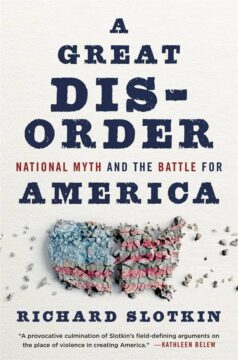 The stories that a country tells itself are just as critical to its functioning as its army, its laws, its borders, and its flag. Where did the country emerge from, and where might it be heading?
The stories that a country tells itself are just as critical to its functioning as its army, its laws, its borders, and its flag. Where did the country emerge from, and where might it be heading?
Such questions of national mythology are especially fraught in the United States, still relatively young in the world, big, rich, powerful, multiethnic, and operating on a set of profoundly contradictory ideas. That it might be possible to make sense of American political division by naming those myths and interpreting the news of the day through their filter is the guiding ambition of Richard Slotkin’s exciting and detailed new decoder ring of a book, A Great Disorder: National Myth and the Battle for America.
The title is an homage to the Wallace Stevens poem “Connoisseur of Chaos,” which declares that “a great disorder is an order”—not just as a metaphysical statement but also as a tidy description of the contested historiography of the United States. Can we look into our past to find the white, Christian, hierarchical, free-market society of red America’s imagining? Or do we see the imperfect but ever-striving egalitarian and multiethnic vision of blue America? Both sides have told selective stories, which are neither completely true nor exactly false.
More here.
Enjoying the content on 3QD? Help keep us going by donating now.
How ideas from physics drive AI: the 2024 Nobel Prize
Ethan Siegel at Big Think:
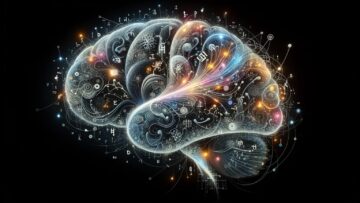 When most of us think of AI, we think of chatbots like ChatGPT, of image generators like DALL-E, or of scientific applications like AlphaFold for predicting protein folding structures. Very few of us, however, think about physics as being at the core of artificial intelligence systems. But the notion of an artificial neural network indeed came to fruition first as the result of physics studies across three disciplines — biophysics, statistical physics, and computational physics — all fused together. It’s because of this seminal work, undertaken largely in the 1980s, that the widespread uses of artificial intelligence and machine learning that permeate more and more of daily life are available to us today.
When most of us think of AI, we think of chatbots like ChatGPT, of image generators like DALL-E, or of scientific applications like AlphaFold for predicting protein folding structures. Very few of us, however, think about physics as being at the core of artificial intelligence systems. But the notion of an artificial neural network indeed came to fruition first as the result of physics studies across three disciplines — biophysics, statistical physics, and computational physics — all fused together. It’s because of this seminal work, undertaken largely in the 1980s, that the widespread uses of artificial intelligence and machine learning that permeate more and more of daily life are available to us today.
More here.
Enjoying the content on 3QD? Help keep us going by donating now.
The Real (Weird) Way We See Numbers
Enjoying the content on 3QD? Help keep us going by donating now.
How can poor countries become rich?
Karthik Tadepalli in Asterisk:
To many people, “development economics” is synonymous with the randomized controlled trial: randomly assigning some group of people to an intervention, like cash transfers or malaria protection nets, in order to tell if it really makes the recipients better off. RCTs have revolutionized development economics and international aid policy. The RCT pioneers Esther Duflo, Abhijit Banerjee, and Michael Kremer won the Nobel Prize in Economics in 2019, and the chief economist of USAID, Dean Karlan, is a prominent RCT advocate. RCTs are influential because they are a powerful tool to cut through uncertainty and preconceptions. For example, international development practitioners long believed that providing textbooks in underfunded schools would help students learn more: but an RCT in Kenya showed that most students did not benefit from getting textbooks, primarily because they were already learning very little in school. RCTs can help us identify what works. Yet nearly everyone who thinks about development has, at some point, had a crisis of faith.
Skeptics argue that RCTs distort the focus of policymakers toward technocratic questions that lend themselves to studies of limited scope, and away from the hard problems that are ultimately more important. After all, aren’t RCT-driven solutions just Band-Aids over the fundamental reality that poor countries are poor? Shouldn’t we spend our time and money focusing on how to bring economic growth and prosperity to countries, rather than tinkering with partial solutions for a tiny number of people?
This argument is appealing, but it faces difficulties when the rubber meets the road. What would it look like to adopt a “growth strategy” for doing good?
More here.
Enjoying the content on 3QD? Help keep us going by donating now.
The K-Pop King
Alex Barasch at The New Yorker:
Bang is portly and good-humored. He was born in Seoul and was a solitary, bookish child until his parents, concerned about his shyness, encouraged him to take up the guitar as a hobby. “I went a little bit further than my parents intended,” he said, wryly. He memorized the Billboard charts, got into Led Zeppelin and heavy metal, and formed a band, sometimes skipping classes to jam. He set music aside to secure entrance to Seoul National University, but he soon returned to the scene as a producer. Bang held off on telling his parents until he’d become successful enough to give them an envelope full of cash. “Musicians can make money, too,” he said.
Three decades later, Bang is a billionaire. We spoke through a translator, whom he sometimes outpaced with references to such stars as Kendrick Lamar and Joey Bada$$; often, he became so animated that he switched to English. Bang got his start at JYP Entertainment, a Korean label. In 2005, he formed his own, calling it Big Hit Entertainment.
more here.
Enjoying the content on 3QD? Help keep us going by donating now.
Jonathan Carroll’s Impossible Realism
Gary K. Wolfe at the LARB:
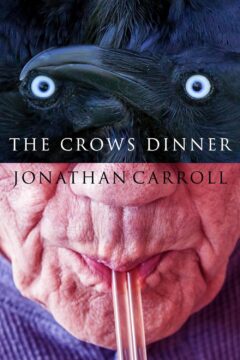 JONATHAN CARROLL’S The Crow’s Dinner, a 2017 collection of anecdotes, vignettes, and short essays (now republished in ebook form by JABberwocky Literary Agency, along with five other Carroll titles), offers a delightful and generous sampling of the American author’s thoughts about life, art, and living in his adopted hometown of Vienna, but it might seem a bit sparse when it comes to clues about the enigmas of his unique brand of fiction. There are some notable exceptions, though: one is a short piece titled “Impossible Realism,” a term he tells us “may sound like oxymoron” but “makes a great deal of sense when we permit ourselves to look beyond the quotidian and once again open up fully to wonder, like we used to as children.”
JONATHAN CARROLL’S The Crow’s Dinner, a 2017 collection of anecdotes, vignettes, and short essays (now republished in ebook form by JABberwocky Literary Agency, along with five other Carroll titles), offers a delightful and generous sampling of the American author’s thoughts about life, art, and living in his adopted hometown of Vienna, but it might seem a bit sparse when it comes to clues about the enigmas of his unique brand of fiction. There are some notable exceptions, though: one is a short piece titled “Impossible Realism,” a term he tells us “may sound like oxymoron” but “makes a great deal of sense when we permit ourselves to look beyond the quotidian and once again open up fully to wonder, like we used to as children.”
As a literary descriptor, “impossible realism” avoids the considerable baggage attached to “magic realism”—which has often been invoked to describe Carroll—as well as the more genre-oriented boxes of fantasy and horror, which Carroll has justifiably complained about, despite having won both the World Fantasy Award and the Bram Stoker Award (probably the most prestigious award for horror fiction).
more here.
Enjoying the content on 3QD? Help keep us going by donating now.
Picture imperfect
Charles Piller in Science:
 In 2016, when the U.S. Congress unleashed a flood of new funding for Alzheimer’s disease research, the National Institute on Aging (NIA) tapped veteran brain researcher Eliezer Masliah as a key leader for the effort. He took the helm at the agency’s Division of Neuroscience, whose budget—$2.6 billion in the last fiscal year—dwarfs the rest of NIA combined. As a leading federal ambassador to the research community and a chief adviser to NIA Director Richard Hodes, Masliah would gain tremendous influence over the study and treatment of neurological conditions in the United States and beyond. He saw the appointment as his career capstone. Masliah told the online discussion site Alzforum that “the golden era of Alzheimer’s research” was coming and he was eager to help NIA direct its bounty. “I am fully committed to this effort. It is a historical moment.”
In 2016, when the U.S. Congress unleashed a flood of new funding for Alzheimer’s disease research, the National Institute on Aging (NIA) tapped veteran brain researcher Eliezer Masliah as a key leader for the effort. He took the helm at the agency’s Division of Neuroscience, whose budget—$2.6 billion in the last fiscal year—dwarfs the rest of NIA combined. As a leading federal ambassador to the research community and a chief adviser to NIA Director Richard Hodes, Masliah would gain tremendous influence over the study and treatment of neurological conditions in the United States and beyond. He saw the appointment as his career capstone. Masliah told the online discussion site Alzforum that “the golden era of Alzheimer’s research” was coming and he was eager to help NIA direct its bounty. “I am fully committed to this effort. It is a historical moment.”
Masliah appeared an ideal selection. The physician and neuropathologist conducted research at the University of California San Diego (UCSD) for decades, and his drive, curiosity, and productivity propelled him into the top ranks of scholars on Alzheimer’s and Parkinson’s disease. His roughly 800 research papers, many on how those conditions damage synapses, the junctions between neurons, have made him one of the most cited scientists in his field. His work on topics including alpha-synuclein—a protein linked to both diseases—continues to influence basic and clinical science.
More here.
Enjoying the content on 3QD? Help keep us going by donating now.
Thursday Poem
Buddha
I used to sit under trees and meditate
on the diamond bright silence of darkness
and the bright look of diamonds in space
and space that was stiff with lights
and diamonds shot through, and silence
And when a dog barked I took it for soundwaves
and cars passing too, and once I heard
a jet plane which I thought was a mosquito
in my heart, and once I saw salmon walls
of pink and roses, moving and ululating
with the drapish
Once I forgave dogs, and pitied men, sat
in the rain countin Juju beads, raindrops
are ecstacy, ecstacy is raindrops—birds
sleep when the trees are giving out light
in the night, when rabbits sleep too, and dogs
I had a path that I followed through piney woods
and a phosphorescent white hound-dog named Bob
who led me the way when the clouds covered
the stars, and then communicated to me
the sleepings of a loving dog enamoured
of God.
On Saturday mornings I was there, in the sun,
contemplating the blue-bright air, as eyes
of Lone Ranger penetrated the dust
of my canyon thoughts, and Indians
and children, and movie shows
Or Saturday morning in China when all is so fair
crystal imaginings of pristine lakes, talk
with rocks, walks with Chi-pack across
Mongolias and silent temple rocks in valleys
of boulder and tarn-washed clay,—shh—
sit and otay
and if men were dyin or sleepin in rooftops
beyond, or frogs croaked once or thrice
to indicate supreme mystical majesty, what’s
the diff? and I saw blue sky no different
from dead cat—and love and marriage
No different than mud—that’s blood—
and lighted clay too—illuminated intelligence
faces of angels everywhere, with Dostoyevsky’s
unease praying in their X-brow faces,
twisted and great,
And many a time the Buddha played a leaf
on me at midnight thinkin-time, to
remind me “This Thinking Has Stopped,’
which it had, because no thinking was there
but wasnt liquidly mysteriously brainly there
And finally I turned into a diamond stone
and sat rigid and golden, gold too—didn’t dare
breathe, to break up the diamond that cant
even cut into butter anyway, how brittle
the diamond, how quick returned thought—
impossible to exist
………… Buddha say:
………… ‘All’s possible’
by Jack Kerouac
from Poems All Sizes
City Light Books San Francisco, 1992
Enjoying the content on 3QD? Help keep us going by donating now.
Robert Downey Jr. Is a Novelist With a Novel Muse in ‘McNeal’
Jesse Green in The New York Times:
 Certainly Jacob McNeal, played by the formidable Robert Downey Jr., is more a data set than a character. A manly, hard-driving literary novelist of the old school, like Saul Bellow or Philip Roth, he is not at all the magnetic and personable man Akhtar describes in the script; rather, he is whiny, entitled and fatuous. (“At my simple best, I’m a poet,” he says.) About the only time he engages instead of repels is when, in the amusing opening scene, as his doctor (Ruthie Ann Miles) prepares to deliver bad news, he fails to get ChatGPT to tell him his chances of winning the Nobel Prize.
Certainly Jacob McNeal, played by the formidable Robert Downey Jr., is more a data set than a character. A manly, hard-driving literary novelist of the old school, like Saul Bellow or Philip Roth, he is not at all the magnetic and personable man Akhtar describes in the script; rather, he is whiny, entitled and fatuous. (“At my simple best, I’m a poet,” he says.) About the only time he engages instead of repels is when, in the amusing opening scene, as his doctor (Ruthie Ann Miles) prepares to deliver bad news, he fails to get ChatGPT to tell him his chances of winning the Nobel Prize.
“I hope this was helpful,” the bot types.
“It was not, you soulless, silicon suck-up,” he replies.
We are meant to understand that McNeal is a man who wears his awfulness, in this case his vanity, as an adorable idiosyncrasy, as if it were a feathered hat. He flirts and philanders with equal obliviousness to moral implications. He aggressively asserts his anti-woke bona fides. While being interviewed by a New York Times journalist, who is Black, he asks if she was a “diversity hire.” And when she fails to take the bait, he adds, as a man of his sophistication would know enough not to, “Did I say something wrong?”
More here.
Enjoying the content on 3QD? Help keep us going by donating now.
Jonathon Carroll Discussing MR. BREAKFAST With Dan Chaon
Enjoying the content on 3QD? Help keep us going by donating now.
Wednesday, October 9, 2024
The bookies’ odds for tomorrow’s Nobel Prize in Literature
Emily Temple at Literary Hub:
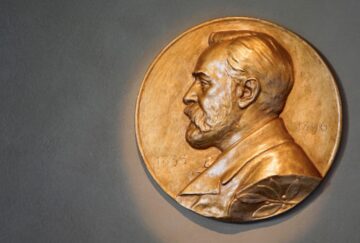 The 2024 Nobel Prize in Literature will be announced this Thursday, October 10. Who will win? As ever, no one knows. But everyone likes to guess…and bet. And because money talks, the betting odds can tell you a lot. Or a little. Or, something, anyway!
The 2024 Nobel Prize in Literature will be announced this Thursday, October 10. Who will win? As ever, no one knows. But everyone likes to guess…and bet. And because money talks, the betting odds can tell you a lot. Or a little. Or, something, anyway!
To figure out where to put my (extremely metaphorical) money this year, I consulted Ladbrokes, the UK’s premiere (?) betting outlet, which offers an extensive list of favorites, including many old hats and a few new ones.
Can Xue tops the list for the second year in a row. Is this her year? (I wouldn’t be surprised—last year, I predicted that she would win in 2024.) Australian novelist Gerald Murnane is in second place. Is it his year? After all, last year he was third, and in second place was Jon Fosse, who won. So it only follows. Maybe, maybe. Murakami is hanging around as always; César Aira is in the mix; the Greek writer Ersi Sotiropoulos makes a surprise appearance. Margaret Atwood has rather come up in the world since last year, when her odds were 39/1. Robert Coover is on the list, though very sadly, now ineligible. J.K. Rowling is in the insult slot, which made me laugh.
More here.
Enjoying the content on 3QD? Help keep us going by donating now.
Review of “The Third Realm” by Karl Ove Knausgård
Lara Feigel in The Guardian:
 “Signs are taken for wonders,” TS Eliot’s speaker observes soberly in Gerontion. But what is the difference between a wonder and a sign – and which do we prefer? Such questions flow through Karl Ove Knausgård’s Morning Star series of novels, an ongoing effort to open fiction up into a kind of vast Book of Revelation in which visions of red deer, landlocked crabs and devils stream across a rural Norway populated by Knausgård’s familiar hotel bars and supermarkets.
“Signs are taken for wonders,” TS Eliot’s speaker observes soberly in Gerontion. But what is the difference between a wonder and a sign – and which do we prefer? Such questions flow through Karl Ove Knausgård’s Morning Star series of novels, an ongoing effort to open fiction up into a kind of vast Book of Revelation in which visions of red deer, landlocked crabs and devils stream across a rural Norway populated by Knausgård’s familiar hotel bars and supermarkets.
In the first volume, 2021’s The Morning Star, a disparate group of Knausgårdian characters – a jaded academic with a manic-depressive wife, a doubting vicar with a jealous husband – found their lives illuminated and sent off kilter by a new, preternaturally bright star in the sky. The vicar buried a man she’d seen alive after his death; two characters shared a vision of a ghost. This was followed by The Wolves of Eternity, a tighter story where a funeral director with an unexpected zest for life meets his half-sister, watched over by that same potentially diabolical star, amid a series of disquisitions on resurrection. Both novels had flashes of brilliance, but were unable to find a satisfying structure to blend the everyday with the supernatural and philosophical.
The Third Realm is quite different, even though the characters come from the earlier novels. With breathtaking confidence, Knausgård mirrors The Morning Star, giving us other, richer perspectives on the material.
More here.
Enjoying the content on 3QD? Help keep us going by donating now.
Google DeepMind boss, Demis Hassabis, wins Nobel for proteins breakthrough
Georgina Rannard at the BBC:
 British computer scientist Professor Demis Hassabis has won a share of the Nobel Prize for Chemistry for “revolutionary” work on proteins, the building blocks of life.
British computer scientist Professor Demis Hassabis has won a share of the Nobel Prize for Chemistry for “revolutionary” work on proteins, the building blocks of life.
Prof Hassabis, 48, co-founded the artificial intelligence (AI) company that became Google DeepMind.
Professor John Jumper, 39, who worked with Prof Hassabis on the breakthrough, shares the award along with US-based Professor David Baker, 60.
Proteins are the building blocks of life and are found in every cell in the human body.
Better understanding proteins has driven huge breakthroughs in medicine. It is used in solving antibiotic resistance and to image enzymes that can decompose plastics.
Prof Hassabis said it was the “honour of a lifetime” to receive the Nobel.
“I’ve dedicated my whole life to working on AI because I believe in its potential to change the world,” he said in a press conference on Wednesday.
More here.
Enjoying the content on 3QD? Help keep us going by donating now.
The 2024 Nobel Prize in Physics Went To Computer Scientists!
Enjoying the content on 3QD? Help keep us going by donating now.
